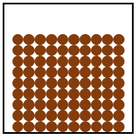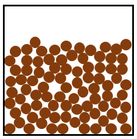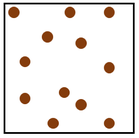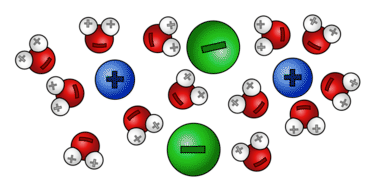
LG06 - Physical and Chemical Changes of Matter
Quiz
•
Chemistry, Science
•
10th - 12th Grade
•
Practice Problem
•
Medium
+2
Standards-aligned
Joseph May
Used 148+ times
FREE Resource
Enhance your content in a minute
20 questions
Show all answers
1.
MULTIPLE CHOICE QUESTION
30 sec • 1 pt

Which state symbol best describes the phase of the substance shown in this particle view diagram?
(s)
(l)
(g)
(aq)
Tags
NGSS.MS-PS1-4
2.
MULTIPLE CHOICE QUESTION
30 sec • 1 pt

Which of the following best describes the phase of this substance?
compressible with fixed shape
compressible with changeable shape
rigid with fixed shape
rigid with changeable shape
3.
MULTIPLE CHOICE QUESTION
30 sec • 1 pt
Which of the following shows the phase of a substance whose shape and volume cannot change?




Tags
NGSS.MS-PS1-4
NGSS.MS-PS3-4
4.
MULTIPLE CHOICE QUESTION
30 sec • 1 pt

Which state symbol best describes the phase of NaCl in this particle view diagram?
(s)
(l)
(g)
(aq)
Tags
NGSS.MS-PS1-4
5.
MULTIPLE CHOICE QUESTION
30 sec • 1 pt

Which of the following formulas could be represented by this diagram?
AlF3 (g)
AlF3 (l)
NH3 (g)
NH3 (s)
Tags
NGSS.MS-PS1-1
6.
MULTIPLE CHOICE QUESTION
45 sec • 1 pt
Intermolecular forces (IMFs) are responsible for...
bonding atoms together
attracting molecules to each other
attracting electrons in the sea of electrons
holding electrons in an atom
Tags
NGSS.MS-PS3-4
7.
MULTIPLE CHOICE QUESTION
30 sec • 1 pt

Which of the following best describes the change shown in this diagram?
Physical change because a new substance was created.
Physical change because no new substance was created.
Chemical change because a new substance was created.
Chemical change because no new substance was created.
Tags
NGSS.MS-PS1-1
NGSS.MS-PS1-2
Create a free account and access millions of resources
Create resources
Host any resource
Get auto-graded reports

Continue with Google

Continue with Email

Continue with Classlink

Continue with Clever
or continue with

Microsoft
%20(1).png)
Apple
Others
By signing up, you agree to our Terms of Service & Privacy Policy
Already have an account?
Similar Resources on Wayground

20 questions
1° M A Química Evaluación intermedia - Práct Independiente
Quiz
•
10th Grade

20 questions
ELS 11 Quiz 2.1 Geological Time Scale
Quiz
•
11th Grade

17 questions
(2.4) Isotopes and Its Uses
Quiz
•
10th Grade

20 questions
quiz 3 sec 2
Quiz
•
11th Grade

15 questions
Advance Chemistry
Quiz
•
10th Grade

20 questions
sec 2 lesson 3 chapter 3
Quiz
•
11th Grade

15 questions
Hasil Kali Kelarutan
Quiz
•
11th Grade

20 questions
Measurements in the Chemistry Lab
Quiz
•
9th - 12th Grade
Popular Resources on Wayground

10 questions
Honoring the Significance of Veterans Day
Interactive video
•
6th - 10th Grade

9 questions
FOREST Community of Caring
Lesson
•
1st - 5th Grade

10 questions
Exploring Veterans Day: Facts and Celebrations for Kids
Interactive video
•
6th - 10th Grade

19 questions
Veterans Day
Quiz
•
5th Grade

14 questions
General Technology Use Quiz
Quiz
•
8th Grade

25 questions
Multiplication Facts
Quiz
•
5th Grade

15 questions
Circuits, Light Energy, and Forces
Quiz
•
5th Grade

19 questions
Thanksgiving Trivia
Quiz
•
6th Grade
Discover more resources for Chemistry

25 questions
Unit 4/5-Covalent Bonding/Nomenclature
Quiz
•
10th Grade

20 questions
Naming Ionic Compounds
Quiz
•
10th - 12th Grade

20 questions
Ions
Quiz
•
10th Grade

25 questions
VSPER Shape Quiz
Quiz
•
10th Grade

17 questions
Periodic Trends
Quiz
•
10th Grade

14 questions
PERIODIC TRENDS
Quiz
•
11th Grade

61 questions
KAP Chemistry Covalent Test Review
Quiz
•
10th Grade

27 questions
Unit 4/5 Covalent Bonding/Nomenclature
Quiz
•
10th - 12th Grade

